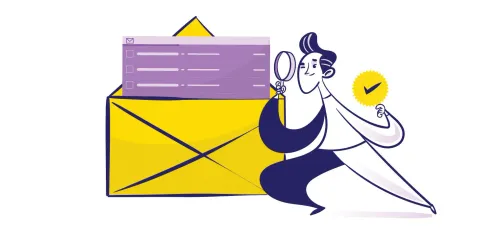In the realm of software development, email validation is a fundamental task, especially when dealing with user inputs or sending email notifications. To ensure that your Java applications handle email addresses correctly, it's essential to follow the standards set by RFC 5322. As an expert in the field, this comprehensive guide will walk you through everything you need to know about Java email validation, with a strong focus on RFC 5322 compliance.
Understanding the Importance of RFC 5322
RFC 5322, formally known as "Internet Message Format," defines the standard for email addresses' syntax and format. Complying with RFC 5322 ensures that your application can send, receive, and process email addresses correctly. By adhering to these standards, you enhance your software's reliability and interoperability, making it compatible with various email systems and clients.
The Anatomy of an Email Address
Before we dive into the details of Java email validation according to RFC 5322, let's break down the essential components of an email address:
Local Part: This is the part of the email address before the "@" symbol. It can contain letters, digits, and special characters.
@ Symbol: Separates the local part from the domain part.
Domain Part: This is the part of the email address after the "@" symbol. It consists of a domain name, which includes the top-level domain (TLD) and optional subdomains.
Top-Level Domain (TLD): Represents the highest level in the domain hierarchy, such as ".com," ".org," or ".net."
Java Email Validation Using Regular Expressions
One common approach to validate email addresses in Java is by using regular expressions. Regular expressions provide a powerful and flexible way to define patterns for matching email addresses. Here's an example of a Java regular expression for validating email addresses according to RFC 5322:
String emailRegex = "^[a-zA-Z0-9._%+-]+@[a-zA-Z0-9.-]+\\.[a-zA-Z]{2,}$";
This regular expression checks for the following:
- The local part can contain letters, digits, and special characters like period (.), underscore (_), percent (%), plus (+), and hyphen (-).
- The domain part can contain letters, digits, and hyphens, with a period (.) separating subdomains if present.
- The top-level domain (TLD) should consist of at least two letters.
You can use this regular expression in Java to validate email addresses in your applications.
Java Email Validation Best Practices
While the regular expression method is a powerful way to validate email addresses, there are additional best practices to consider:
Use a Library: Instead of implementing your own validation logic, consider using established Java libraries like Apache Commons Validator or the built-in javax.mail.internet.InternetAddress class.
Handle Internationalization: Be aware that email addresses can contain international characters. Ensure your validation logic can handle such characters by using libraries or Unicode support.
DNS Validation: For more robust validation, you can perform DNS validation to check if the domain exists and has valid MX (Mail Exchanger) records.
User-Friendly Error Messages: Provide clear and user-friendly error messages when an invalid email address is detected. This helps users correct their input.
Update Your Validation Logic: Periodically review and update your email validation logic to stay in compliance with evolving email standards.
Common Questions About Java Email Validation
Let's address some of the most commonly asked questions about Java email validation:
Q1: Can I rely solely on regular expressions for email validation in Java?
While regular expressions are a valuable tool, it's recommended to use established libraries or classes like Apache Commons Validator or javax.mail.internet.InternetAddress for more reliable email validation.
Q2: How do I handle internationalized email addresses in Java?
To handle internationalized email addresses, ensure your validation logic supports Unicode characters and consider using libraries that provide internationalization support.
Q3: What's the difference between RFC 5322 and RFC 5321 (SMTP)?
RFC 5322 focuses on the syntax and format of email addresses, while RFC 5321 defines the SMTP (Simple Mail Transfer Protocol) for sending email messages. Both standards are essential for email communication.
Q4: Are there any performance considerations when validating email addresses in Java?
Regular expressions can be computationally expensive, especially for complex patterns. Consider caching validation results or using optimized libraries to improve performance.
Q5: How often should I update my email validation logic?
Stay informed about changes in email standards and update your validation logic periodically to ensure compliance with the latest requirements.
Conclusion
Mastering Java email validation according to RFC 5322 is crucial for developing reliable and interoperable software. By understanding the standards, using best practices, and addressing common questions, you can ensure that your Java applications handle email addresses correctly and provide a seamless user experience. Email validation is not just about compliance; it's about building trust and reliability in your communication channels.



